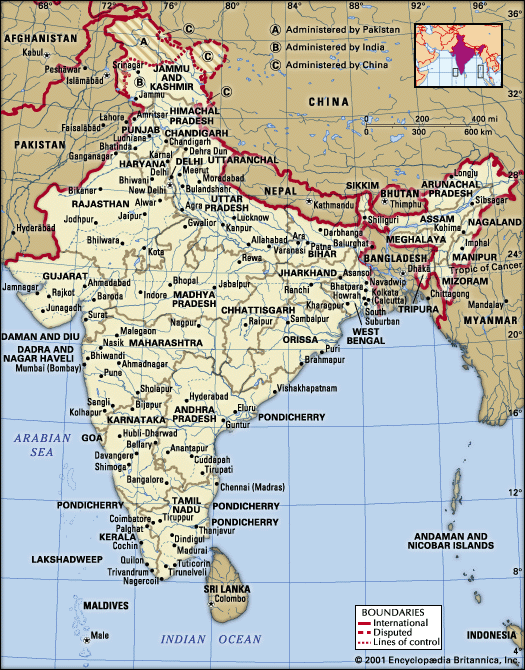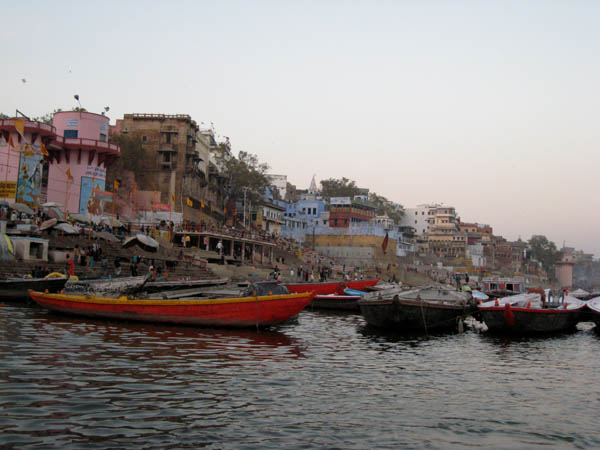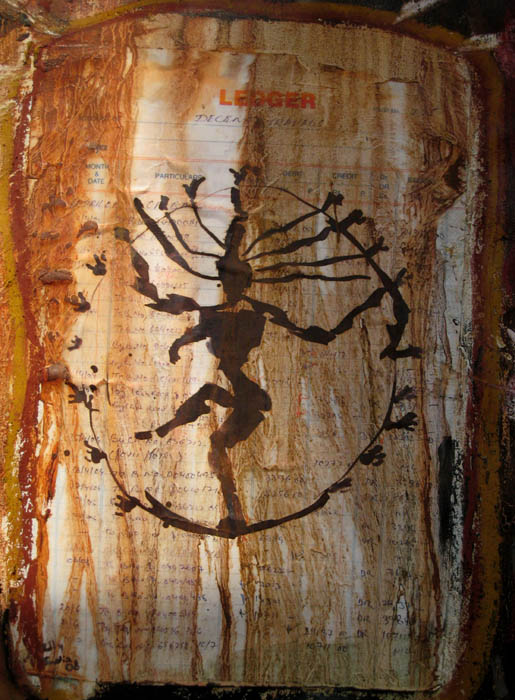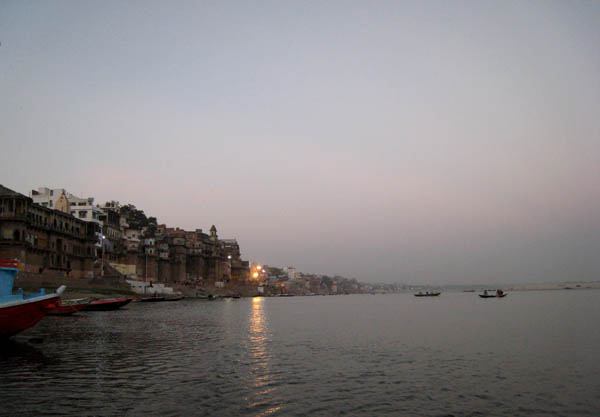From Wikipedia, the free encyclopedia

Varanasi is a city considered holy by Hindus, Buddhists & Jains, situated on the banks of the river Ganges (Ganga) in the Indian state of Uttar Pradesh. It is one of the oldest continually inhabited cities in the world, dating back thousands of years and contemporaneous with the Sumer civilisation. The city is called Kashi, "the luminous" in the Rigveda. It is often also referred to as "city of temples and learning."
The culture of Varanasi is deeply associated with the river Ganges and the river's religious importance. The city has been a cultural and religious center in northern India for thousands of years. Varanasi has its own style of classical Hindustani music, and has produced prominent philosophers, poets, writers and musicians in Indian history, including Kabir, Ravi Das, Munshi Premchand, Jaishankar Prasad, Acharya Ram Chandra Shukla, Pandit Ravi Shankar, Hariprasad Chaurasia and Ustad Bismillah Khan. Varanasi is the home of Banaras Hindu University. Tulsidas wrote his Ramcharitmanas here, and Gautam Buddha gave his first sermon at Sarnath near Kashi. The language spoken in Varanasi is Kashika Bhojpuri which is closely related to Hindi.

the ganges ghats taken by amatuer phototographer me
People and Culture
Regions near the banks of the Ganges are extremely crowded and house several Hindu temples, narrow winding lanes and road-side shops. The main residential areas of Varanasi (especially for the middle and upper classes) are situated in regions far from the ghats; they are more spacious and less polluted. Varanasi has nearly 100 ghats, most of which are bathing ghats, while some others are for cremation. According to Hindu belief, dying at Kasi ensures release from the eternal cycle of birth and rebirth. Many of these ghats were built when the Marathas controlled the city and the Scindias, the Peshwas, Holkars and Bhonsles stand out as patrons of present day Varanasi. Even today many of the ghats are privately owned. Shivala or Kali ghat is still owned by the former Maharaja of Kashi.
Various legends are associated with the ghats and it is believed that Dasaswamedh Ghat is where Lord Brahma sacrificed 10 horses in a yajna. Manikarnika Ghat is the place where Lord Vishnu dug a pit with his Chakra and, while performing various penances, filled it with his perspiration. While Lord Shiva was watching him, his earring (Manik) fell into the pit, and hence the name. According to another legend, in order to keep Lord Shiva from moving around with his devotees, Goddess Parvati hid her earrings and asked him to find them, saying they had been lost on the banks of the Ganges, so as to make Lord Shiva stay at the place and search forever. It is said that whenever a body gets cremated at the Mani Karnika Ghat, Lord Shiva asks the soul whether they have seen the earring (Mani Karnika). Other interesting ghats are Man Mandir Ghat built in 1770 CE by Maharaja Jai Singh of Jaipur, the intrepid astronomer who built his observatories here, Mansarover Ghat built by Man Singh of Amber. Bachraj is frequented by Jain devotees for it has three Jain temples near the banks of the river. Tulsi Ghat is where Tulsidas wrote Ramcharitmanas. Lalita Ghat was built by the late King of Nepal. Darbhanga Ghat was built by Maharaja of Darbhanga.

a bit of art i did after varanasi...Shiva as Nataraja
sold
Shiva (pronunciation: [ʃɪ.ʋə]; Sanskrit: िशव, Śiva, lit. "Auspicious one") is one of the principal deities of Hinduism. Within Shaivism he is viewed as the Supreme deity, whereas in other branches of Hinduism such as the Smarta tradition he is worshipped as one of the six manifestations of the Divine. Followers of Hinduism who focus their worship upon Shiva are called Shaivites or Shaivas (Sanskrit Śaiva).[2] His role as the primary deity of Shaivism is reflected in his epithets Mahādeva ("great god"; mahā = great + deva = god),[3][4] Maheśvara ("great lord"; mahā = great + īśvara = lord),[5][6] and Parameśvara ("Supreme Lord").[7] Shaivism, along with Vaiṣṇava traditions that focus on Vishnu, and Śākta traditions that focus on the goddess (Devī) are three of the most influential denominations in Hinduism.[8]
Shiva is one of the six primary forms of the Divine in Smartism, a denomination of Hinduism that puts particular emphasis on six deities, the other five being Vishnu, Shakti, Ganesha, Kartikkeya and Surya.[9] Another way of thinking about the divinities in Hinduism identifies Brahma, Vishnu, and Shiva as each representing one of the three primary aspects of the divine in Hinduism, known collectively as the Trimurti. In the Trimurti system, Brahma is the creator, Vishnu is the maintainer or preserver, and Shiva is the destroyer or transformer.[10]
Shiva is usually worshipped as the Shiva linga. In images, he is generally represented as immersed in deep meditation or dancing the Tandava upon the demon of ignorance in his manifestation of Nataraja, the lord of the dance.
The depiction of Shiva as Nataraja (Tamil: நடராஜா, Sanskrit: naṭarāja, "Lord of Dance") is popular.[140][141] The names Nartaka ("Dancer") and Nityanarta ("Eternal Dancer") appear in the Shiva Sahasranama.[142] His association with dance and also with music is prominent in the Puranic period.[143] In addition to the specific iconographic form known as Nataraja, various other types of dancing forms (Sanskrit: nṛtyamūrti) are found in all parts of India, with many well-defined varieties in Tamil Nadu (in southern India) in particular.[144]

on the Ganges at night time
Holy city
Varanasi is a holy city in Hinduism, one of the most sacred pilgrimage places for Hindus of all denomination. The Hindu God Shiva supposedly once lived there making many Hindus want to go there on a pilgrimage. More than 1,000,000 pilgrims visit the city each year. Here is the holy shrine of Lord Kashi Vishwanath, (an aspect of Lord Shiva) and one of the twelve revered Jyotirlingas of the Lord Shiva. Hindus believe that bathing in the river Ganga will remit sins and that dying in the holy city of Kashi (Varanasi) circumvents rebirth. This holy city is worshipped as one of the Shakti Peethas where Divine Mother Sati's earring fell and so devotees believe that on that spot stands the present Vishalakshi Temple.[9]and Hindus of the shakti sect come to the city because the river itself is said to be shakti (goddess) itself. It is here that Adi Shankara wrote his commentaries on Hinduism, leading to the great Hindu revival
Varanasi is also considered one of the holiest places in Buddhism, one of the four pilgrimage sites said to have been designated by Gautama Buddha himself (the others being Kushinagar, Bodh Gaya, and Lumbini). In the residential neighbourhood of the city lies Sarnath, the site of the deer park where Gautama Buddha is said to have given his first sermon about the basic principles of Buddhism. The Dhamek Stupa is one of the few pre-Ashokan stupas remaining, although only the foundations remain. Also remaining is the Chaukhandi Stupa commemorating the spot where the Buddha met his first deciples, dating back to the fifth century or earlier and later enhanced by the addition of an octagonal tower.
Varanasi is also a pilgrimage place for Jains. It is believed to be the birthplace of Parshvanatha, the twenty-third Tirthankar. Vaishnavism and Shaivism have co-existed in Varanasi harmoniously.
The city has also been influenced by Islamic culture. There has been some degree of continuous tension between different religious communities in the city, which despite its centrality to multiple religions contains relatively few ancient sites.